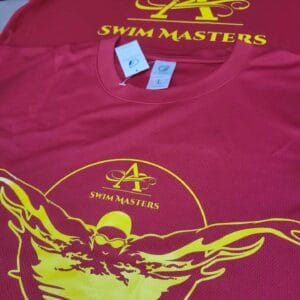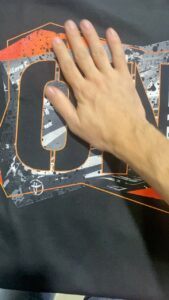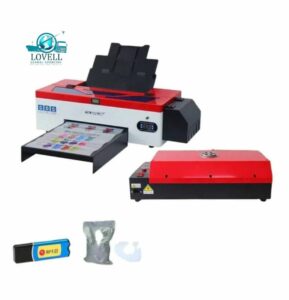Are you a business owner or an individual seeking to have apparel or other items printed just for you? There are more alternatives available now than ever, thanks to the development of digital printing technology. DTF printing, a novel technique that has swept the printing industry off its feet, is one of the most recent developments in this area. So what exactly is DTF printing, and what are some of its advantages and disadvantages? We’ll cover everything about DTF printing in this article, including its method, benefits as well as drawbacks. So be ready to explore the world of DTF printing and determine if it is the best option for your printing requirements.

Pros and Cons of DTF Printing
| Advantages | Disadvantages |
|---|---|
| High-quality prints | Limited color range |
| Versatile | Long process time |
| Cost-effective | Environmental concerns |
| Easy to use | Limited scalability |
| More durable | Maintenance requirements |
What are the advantages of DTF printing?
1. High Quality Prints
DTF printing provides a degree of quality and detail that is hard to get with conventional printing techniques. It has the ability to create delicate, complicated patterns with accurate lines and details. Screen printing on the flip side, is limited by the quantity of screens used in the process. Moreover, DTF printing employs white ink as a foundation. This makes it possible to print vivid colors on dark materials, which is difficult with alternative printing techniques.

It starts with printing the design using a DTF printer onto a specific release paper. To produce a high-quality print that is accurate and bright, the printer combines white and colored inks. After printing, the design is coated with a powder adhesive using a shaker to aid in the ink’s adhesion to the cloth during the transfer process. Then, we cover the garment with the printed release paper. Then using pressure and heat, transfer the pattern to the fabric.
The fact that the print won’t break or fade over time, even after several washing, is the next benefit of high-quality prints in DTF printing. This makes it perfect for printing beautiful, durable graphics on t-shirts, sweatshirts, and other clothing. DTF printing is a fantastic alternative for printing text or intricate designs since the prints it produces are crisp and accurate.
2. Versatile
DTF printing is a very flexible printing technique that you can use on a variety of materials, such as cotton, polyester, and more. This makes it the perfect option for printing unique graphics on promotional goods like t-shirts, sweatshirts, jackets, caps, and bags. This printing method is also not limited by fabric color. That makes it a fantastic option for printing on dark or colorful textiles.
The versatility of DTF printing also allows for a wide range of design options. It can provide high-quality results whether you want to print a picture, a complex image, or a simple logo. You can print bright and vivid colors on even dark materials, thanks to the ability to use white ink as a base. DTF printing also allows a variety of design sizes, from tiny logos to full-coverage artwork.
The capability of DTF printing to make multi-color graphics without the need of screens or other sophisticated equipment is another benefit of its adaptability. Small enterprises or individuals that wish to print unique graphics in limited numbers now have a more inexpensive choice.
3. Cost-effective
Compared to other conventional printing techniques like screen printing or embroidery, DTF printing is a more affordable printing process. Screen printing requires the creation of distinct screens for each color in the pattern, which is time-consuming and expensive. It decreases the cost and time to print a design since it doesn’t need separate screens for each color.
In addition, DTF printing offers a more affordable alternative to other digital printing techniques like Direct-to-Garment (DTG) printing while still producing prints of excellent quality and vivid color. DTG printing is an expensive alternative for printing in small numbers since it needs costly hardware and ink. DTF printing, on the other hand, employs less expensive powder glue and ink. This makes it a more cost-effective choice for individuals and small enterprises.
DTF printing’s capacity to print designs in lower numbers is an another way that reduces costs. It can generate customized prints in tiny numbers unlike classic printing processes that have a minimum order quantity. It is perfect for firms who need a lesser amount of customized goods.
4. Easy to use
DTF printing is a simple printing process that needs little training and knowledge to operate. Anybody with a fundamental grasp of the printing process may do DTF printing. But screen printing calls for a great deal of technical expertise and experience.
Using a DTF printer, the pattern is printed onto a special release paper. It is then coated with a powder adhesive and heated and pressured until it adheres to the fabric. With a fundamental grasp of the printing process, you can complete this very straightforward task.
Moreover, unlike screen printing or embroidery, DTF printing does not need specific machinery. To apply the powder adhesive, just a DTF printer, a heat press, and a shaker is what one will need. This makes this technology a more affordable choice for consumers or small enterprises that wish to develop customized goods without investing in pricey equipment.
5. More durable

DTF printing is known for its tensile strength and enduring prints. Before the pattern is printed onto the cloth, we add unique powder adhesive to it. Prints made with this glue have a durable connection between the ink and the cloth. This resists breaking, peeling, and fading.
It also makes use of premium ink. This ink can survive several washings without losing its brightness or clarity. The ink is also water-resistant, so when prints are exposed to water, they won’t smear or wash away.
It is more resilient than other digital printing techniques like Direct-to-Garment (DTG) printing. DTG printing employs ink that is absorbed into the fabric and is water-based. This cause designs to wash away or fade over time. Contrarily, DTF printing utilizes a powder adhesive that forges a tight link between the ink and the fabric, producing prints that are more durable.
Disadvantages of DTF Printing
1. Limited color range
The narrow range of colours is one of its key drawbacks. For printing designs that need a variety of colors or sophisticated color gradients, DTF printing is not the best option. This is because DTF printing uses a powder adhesive that is applied to the design before it is transferred onto the fabric. The powder adhesive can only hold a certain amount of ink, which limits the number of colors that can be used in a design.

For DTF printing, each color in the pattern must have its own layer of adhesive applied. For designs that need a lot of colors or complicated graphics, this might lengthen the printing process and raise the cost.
DTF printing has a smaller color range than other digital printing techniques like Direct-to-Garment (DTG) printing or dye-sublimation printing. Compared to dye-sublimation printing, DTG printing uses a water-based ink that can generate a greater variety of colors.
The difficulty to precisely reproduce certain colors is another limitation of DTF printing’s limited color option. It cannot correctly replicate neon, metallic, or bright colors. This restricts the design possibilities for organizations or people that need these shades.
2. Long process time
The lengthy production time of DTF printing is another problem. It involves a number of procedures that you need to complete before the print is made, which extends printing time and raise printing costs.
First, a digital printer prints the pattern onto a unique film. The film is then applied on the garment after being covered with a powder adhesive. After that, we place the garment in a heat press to melt the glue and transfer the design to the cloth.
DTF printing takes more time to complete than other digital printing techniques like Direct-to-Garment (DTG) printing or screen printing. DTG printing can create a print in only a few minutes, but screen printing can create several prints quickly. On the other hand, DTF printing might need up to an hour to complete a single print.
The long process time can also limit the volume of prints that it can produce in a short amount of time. DTF printing is thus less suitable for organizations or people that need to print a lot of sheets quickly.
3. Environmental concerns
Here comes the next digital printing limitation. The use of powders and chemicals in DTF printing raises a number of environmental issues. With DTF printing, the pattern is coated with a powder adhesive prior to being transferred to the cloth. If not properly disposed of, the chemicals in this powder glue might be hazardous to the environment.
Moreover, the energy needed to run the heat press used in DTF printing have an adverse effect on the environment by producing carbon emissions.
The environmental effect of DTF printing could be greater than that of dye-sublimation or Direct-to-Garment (DTG) printing. Compared to dye-sublimation printing, which generates less waste and consumes less energy, DTG printing employs more ecologically friendly water-based inks.
The disposal of the extra powder glue and ink used in DTF printing raises yet another environmental issue. We need to dispose these items properly so that they do not contribute to pollution or damage the environment.
4. Maintenance requirements
DTF printing equipment needs regular maintenance to produce high-quality prints. A digital printer, a heat press, and a powder adhesive coating machine are just a few of the specialized tools that we use in DTF printing. All of them need regular maintenance.
To ensure that it produces prints of the highest caliber, the digital printer has to be cleaned and calibrated on a regular basis. We need to clean the print head and ink cartridges and change periodically to avoid blockage. To achieve crisp and aligned printouts, the printer must be calibrated.

Cleaning the heat press regularly prevents heating element buildup, which may influence transfer quality. It is also important to calibrate the press so that it warms for the appropriate amount of time and at the appropriate temperature for each print run.
To ensure that it applies the proper quantity of adhesive to the film, We need to clean & maintain the powder adhesive coating machine regularly. To avoid buildup on the rollers, the machine must be cleaned. Refill the adhesive powder when it runs short.
DTF printing may need more upkeep than other digital printing techniques like Direct-to-Garment (DTG) printing or screen printing since it uses specialist equipment.
5. Limited scalability
The process’s limited scalability is one of the disadvantages of DTF printing. It is appropriate for small to medium print runs if we see the time and efforts to develop the artwork and print each garment. With adding printers and heat presses, manufacturing can scale up, not the speed and efficiency.
DTF printing may be less scalable than Direct-to-Garment (DTG) or screen printing due to its specific equipment and methodology. Screen printing and DTG printing are more productive and can generate higher numbers of prints in a shorter amount of time.
It’s restricted range might also hinder its capacity to scale. Designs with fewer colors or simpler designs work best for DTF printing. Complex patterns with numerous colors may need several layers of film and adhesive, increasing printing time and expense.
Is DTF high-quality?
Yes, DTF printing is considered to be high-quality. Compared to DTG printing, it produces more detail and color vibrancy. Also, the use of powder glue produces a print that can resist repeated washes and wear over time.
Also, you can do DTF printing on a variety of fabrics, like cotton, polyester, and blends. This makes it a versatile option for printing on garments. Nevertheless, a number of variables, such as the caliber of the artwork, the capacity of the printer, and the operator’s expertise, will affect the print’s quality.
Is DTF better than screen printing?
DTF and screen printing have pros and cons. If you want to create high-quality prints with a lasting finish, DTF printing is a fantastic choice. Compared to screen printing, the method enables a better degree of detail and color vibrancy. It is a flexible alternative for garment printing since it is suitable on a range of textiles, including cotton, polyester, and mixes.
Nevertheless, DTF printing is not as scalable as screen printing. It might be more time-consuming owing to the lengthy process time and required maintenance. Screen printing is a better option for larger print runs and designs with fewer colors. DTF or screen printing depends on the person or business’s demands and preferences.
Conclusion | Direct to film printing Pros and Cons
In conclusion, when deciding whether to use DTF printing for garment printing, it is important to weigh its benefits and drawbacks. High-quality prints, adaptability, cost-effectiveness, simplicity of use, and durability are all benefits of DTF printing. It does, however, have some drawbacks, including a restricted color gamut, a protracted processing time, environmental concerns, upkeep requirements, and limited scalability.
Overall, DTF printing can be an excellent option for small to medium-sized printing businesses looking for an alternative to DTG or screen printing. They can decide whether DTF printing is the best option for their printing needs by carefully weighing the pros and cons.
FAQs
Yes, DTF printing is durable and can resist several washes and wear. Because the powder adhesive used in DTF printing bonds with the cloth, the print stays intact.
Vinyl printing is less durable than DTF printing. This is because DTF printing uses a powder adhesive that forms a solid connection with the fabric. On the other hand, vinyl is heat pressed onto the fabric and may peel or fracture over time.
DTF prints on cotton, polyester, and blends. Nevertheless, materials with a larger proportion of polyester function better with the DTF printing method. Why? Because they can resist higher temperatures and create a smoother printing surface.
DTF transfers don’t have a plastic-like feel, and the type of cloth and ink used during printing determine how the print will feel. DTF printing has the ability to create prints of exceptional quality and softness, particularly when applied to materials with a high cotton percentage.
Yes, DTF prints are machine washable and durable enough to endure repeated washings and use. The DTF printing method uses a powder adhesive that forms a strong bind with the cloth to preserve the print.
DTF printing is best for garments, not mugs or other hard surfaces. Sublimation or heat transfer vinyl may be better for printing on mugs.

Ashley Wang is a skilled sales manager with knowledge in DTF printing. She presently works for ShenLan Digital, a reputable DTF printer maker. Ashley is the best person to offer advice on selecting the most suitable DTF printer because she has tested a lot of them. She launched DTFPrinterSchool to educate individuals and organizations about DTF printing technology, providing her expertise and observations on the most recent advancements in the sector. Ashley is an invaluable resource for businesses and individuals wishing to invest in DTF printing technology because of her expertise and experience in the industry.
